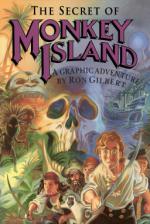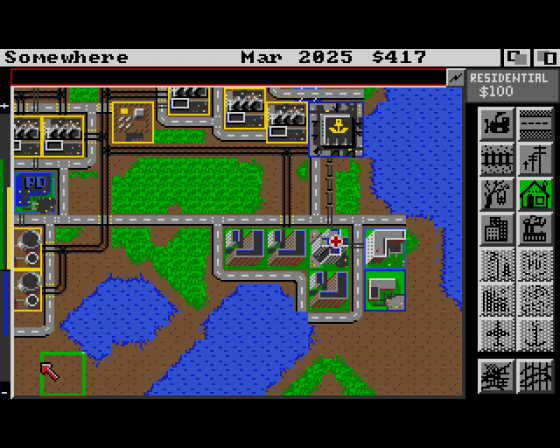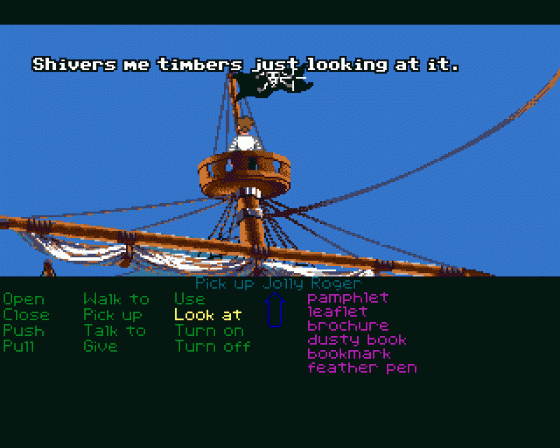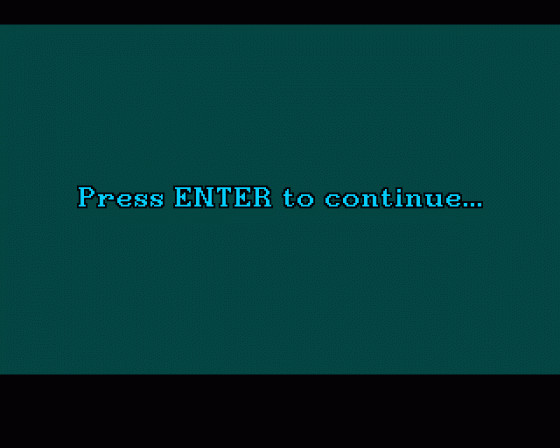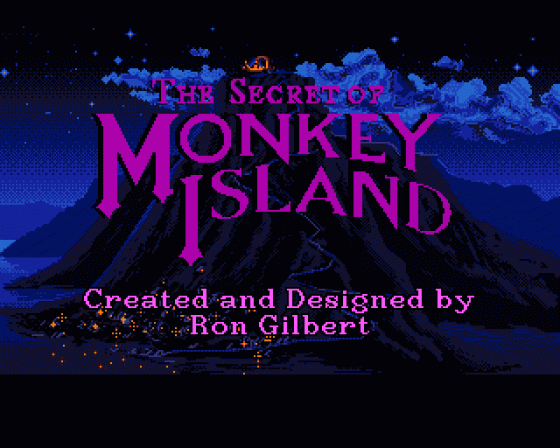
Amiga Power
 1st May 1992
1st May 1992
Categories: Review: Software
Publisher: Lucasfilm
Machine: Amiga 500
Published in Amiga Power #13
Special Souvenir Supplement
The Amiga Power All-Time Top 10 (1992)
Here is this year's completely updated, all-new All-time Top 10 Games. Some of them you'll agree with, a lot of them you possibly won't, but we're convinced you'll have a good time arguing the toss anyway. These are the very best games the Amiga has to offer...
10. Jimmy White's Whirlwind Snooker
This game, it has to be said, has been driving us snooker loopy nuts ever since it scored a 90 percent break in AP4. So slick is its combination of an un-ball-ievably smooth (and fast) three-dimensional representation of the table with remarkably realistic cue-ball control and spot-on sounds that you can almost feel the baize beneath your mouse-fingers.
Add to this the facility to take on either a second human player or one of four corky computer-controlled opponents (including James himself), a trick shot feature, more worthwhile options than you could shake a cue at, and a Crucible-full of cute touches, and Jimmy White's Whirlwind Snooker makes all other contenders for the crown look like a load of old balls. You'd be potty to miss it.
Jimmy White potted 90 percent in AP4.
News: Snooker's author, Archer Maclean, is presently putting together the broadly similar Pool for Virgin. "It's going to be eight and nine ball, with UK and US rules and professional and arcade rules," he says. "It's got the same graphics engine as Snooker, and in nine ball all the balls have the numbers on them which get bigger and smaller in relation to their movement."
Archer's also keen to write a sequel to Snooker: "I'd love to do one. There are quite a lot of things I could do, like make it more user-friendly with far more view options and set-ups. There'll be a couple of big features which I can't mention - one of them would be the major feature." But who will endorse it? "I'd like Jimmy to do that, especially if he wins the World Championships."
Archer also wrote the beat-'em-up IK+ (at Number 38).
Tip: The Hidden Agenda feature in this issue of Amiga Power details how to access the secret 147 Break Mode. Archer also has this to say: "A lot of people still don't seem to understand how to follow a ball round the table - like that guy on Gamesmaster." Suffice it to say, there are plenty of top tips in the marvellous manual, so read it."
Challenge: Get a decent break. "Most people seem to have difficulty getting a break above 25 points. I've done a 32 before now, and I don't really play it."
9. Knights Of The Sky (MicroProse)
Grab your egg and fours and get the bacon delivered! There's a bunch of monkeys on your ceiling - a sausage squad up the blue end, if you will. You know, cabbage creates over the briny and all that... [What on earth are you on about? - Ed]
Flying a super-slick jetfighter armed to the teeth with the very latest line in weaponry can prove tedious in the extreme, which is why taking a trip back to air combat's formative years with Knights Of The Sky proved to be such a breath of fresh air. Its detailed scenery, suitable sounds and splendid sense of World War One wingmanship is top-hole.
Before you know it, bally Jerry's pranged his kite right in the how's your father, and the hairy blighter's dicky-birdied, feathered back on his Sammy, took a waspy, flipped over his Betty Harper's and caught his can in the Bertie [Look, I'm not going to tell you again! - Ed]. The people behind flight simulations should have Knights Of The Sky nailed to their collective forehead as a constant reminder that flying should be a chortle not a chore.
Knights Of The Sky flew high with 87 percent in AP8.
News: A complete mission is available on one of AP9's two cover disks.
Tip: There's flighty advice aplenty in AP11 and AP12.
Challenge: Shoot down Max Immelman.
8. Populous II (Electronic Arts)
With Populous II, Peter Molyneux attempted to finish what he started with the mould-forming Populous way back in 1989. Well, he didn't, but he and his Bullfrog buddies begat the be-all and end-all in god simulations instead.
In Populous II, life itself once again becomes a game in which Good and Evil attempt to settle their differences by pitting populations against each other. People and land are carefully created in minutes and then destroyed in seconds by all manner of natural and unnatural events such as plagues, tidal waves, lightning storms, earthquakes and volcanoes. The long and short of it is, Populous II is more of the same but will bells on the size of Big Ben. Populous II looks better, sounds better, has more (and better) special effects and things to do, and ultimately plays better than its predecessor. And more remarkable is the fact that Populous II is even better still when played against another human. Unmissable.
Populous II ruled AP8 with 93 percent, our highest rating dished out to date.
News: "We reckon Populous II will out-sell its predecessor - in time," says EA's Simon Jeffrey. "For us it showed what a complete farce the Gallup charts are. Birds Of Prey and Populous II shipped at same time and Birds Of Prey was consistently higher chart-wise than Populous II, but sales-wise we know it was the other way around by a factor of about three to one." Heavens.
With the Bullfrog team presently beavering away on their business simulation with a difference, BOB, for release in September, what are the chances of a third Populous? "I don't want to do a sequel for the sake of it," says Peter Molyneux. "If there was an amazing idea for Populous, I'd do it. But there's nothing planned." There is, however, every chance of a Populous II data disk.
Check out the original Populous (currently available on the Star Performers label for £9.99, and only excluded from this 100 because it's so similar to its superior sequel), its Promised Lands Data Disk for the same price, and Populous: The World Editor (70 percent in AP10 and priced at £14.99). Bullfrog also wrote Powermonger (at Number 83).
Tip: There are level codes in AP12. But did you know that there are eight Random Monsters in Populous II? They are: Bronze Man, Dragon, Goblin, Hydra, Harpy, Kraken, Medusa and Neptune. "They appear for different reasons, it's just events happening in the game, if it feels it's becoming unbalanced. If you see a Random Monster, you should also see a person who's left the house on screen. Keep 'sprogging' someone in that house and more and more Random Monsters will be created."
Another handy hint is this: "If you've got a lot of your people following Helen Of Troy, put your Papal Magnet between your people and Helen and they will stop following her."
Challenge: "Win a game without any of your people winning a fight - you can only win by using the effects. It'll say how many fights were won at the end of the game, but of course you shouldn't have won any. It helps to make sure you put your people on an island so they don't spread and do their own thing."
7. Exile (Audiogenic)
The maddest scientist in the whole universe is performing some unwholesome existence-threatening experiments in the bowels of a far-away planet. The one you just crash-landed on, in fact... With a jetpack strapped to your back, it's down to you to penetrate his heavily-guarded, maze-like fortress, destroy the deranged doctor, rescue his unwilling subjects, and escape.
The strength of Exile's playability lies in the fact that it mimics real-world forces and life-forms, and as such places a great emphasis on environmental interaction. There's more thrusting, shooting, exploring, problem-solving, experimenting, and, of course, fun to be had here than in any other arcade adventure. Exile's no oil painting - don't let the C64-style graphics put you off - but its unique approach and considerable depth make it an incomparable work of art.
And it's still regarded by Gary Penn as just about the most interesting thing ever.
Exile received 89 percent in AP1.
News: There's a complete playable world on AP3's cover disk. The Amiga Power team would like to take this opportunity to pay their respects to Exile co-author Jeremy Smith who sadly passed away earlier this year.
The other half of the team - Peter Irvin - is currently working on a 3D polygon-based adventure of sorts.
6. Mega Lo Mania (Image Works)
For the benefit of anyone who ever thought that these new-fangled god simulation things were far too serious for their own good, Sensible Software's Mega Lo Mania is the working man's answer.
The idea here is simply to conquer islands (split into digestible sectors) by managing the evolutionary process of a piece of their populace (the remainder is in the hands of up to three computer-controlled opponents).
This seemingly tedious task actually turns out to be a laugh-a-minute, thanks to a user-friendly interface, an ever-prevalent sense of silliness, and the use of sampled speech (from actors specially chosen for the 'parts') to provide aural feedback to the state of play (the novelty of which never wears off).
The learning curve is smooth, and the sense of achievement is ever present as you shoulder the responsibility for creating and maintaining life, fighting wars, building and breaking alliances, and playing mother to the invention of weapons (from spears to major-league stuff like thermonuclear devices).
Mega Lo Mania dominated AP5 with an impressive 90 percent rating.
News: Mega Lo Mania is also available alongside The First Samurai (at number 11) in a special double-pack from Ubi Soft priced at £30.99.
Work on Mega Lo Mania II is underway, and you can follow its development exclusively in the pages of Amiga Power (where else?).
Those Sensible lads are also working on an arcade-style football simulation called Sensible Soccer, Ocean's Wizkid (see this month's coverdisk) and a Paintball-style game which goes by the name of Cannon Fodder (see AP11's News) amongst other new projects. For more information check out the special Amiga Power Sensible Software disk on the front of this very issue!
Tip: Sensible's sound advice is given in AP7, and there's further help in AP11.
Challenge: This one's from Sensible's Jon Hare: "You need two people to do this. One of you has to take Mega Lo Mania Disk One and Two and put one in each hand, behind their back. The other person then had to guess which disk is in which hand."
5. Sim City (Maxis/Infogrames)
Sim City looks dreary, there's no denying it. All those symbolic blocks and lines and dots... Ugh. But - and it's a big one - there's also no denying that anyone who takes the time to buildup a fully-functioning city, complete with its own businesses, commuters, traffic flow, rail network, crime rate, police force, fire brigade, earthquakes, floods, roving Godzilla (!), and all those other fascinating facets of life as you know it, will find the megalomaniac within tempted to the fore - and it won't be satiated until a universal harmonium has been achieved. And that could take a considerable slice of your life.
Dodgily programmed perhaps (but not so much so that it gets in the way at all), but still one of the most original, perfectly conceived and - yes! - most absorbing games ever.
News: Sim City is currently available with Electronic Arts' Populous in a double pack priced at £29.99.
There are also three data disks available: Architecture I and II respectively offer future and ancient cities for £15.99 apiece, while the Terrain Editor provides additions such as lakes, woods and trees for £15.32. Real fans, however, will be pleased to know a direct sequel to Sim City is planned for the end of this year.
The Amiga version of much-more-complicated successor to Sim City - Sim Earth - was, until the end of last year, in Probe Software's hands, but is now being written by Brian Conrad for game designers Maxis, and should be released this August.
Brian's also working on Sim Ant, in which the player controls an ant colony, taking on red ants or journeying from a garden to a house in an attempt to force its human occupants to sell. All your favourite ants are included, such as Workers, Queens, Soldiers, and the super-sexy Male ants. Contrary to popular belief, Sim Brick (see this month's coverdisks) has nothing to do with Maxis at all.
Tip: Consult AP1 for a cheat.
A sensible start to building a slicker city is to build up areas comprising four or five of the same zone type. Further inspiration can be gleaned from the real world. For example, avoid creating residential zones too near industrial ones, and place Fire and Police stations in and near built-up areas.
Challenge: Survive for five years in the Hamburg 1944 scenario after bulldozing all but one fire station.
4. The Secret Of Monkey Island (Lucasfilm)
The Secret Of Monkey Island is what would-be pirate Guybrush Threepwood must discover if he's ever to fulfill his dream of sailing the high seas and pursuing a romantic role with roguish aplomb. The Secret Of Monkey Island is essentially an interactive storybook, the pages of which are easily turned with a comfortable mouse-driven interface.
But these pages come to life with impressive location shots of pirates' ships, seedy inns, mysterious mansions and treasure islands, and strong characters to interact with such as pirates, ghosts, more pirates, piranha poodles, even more pirates, and a dog called Fido (!).
There's an ocean of painful humour to break the ice and some skankin'-good music, too, which all told adds up to more atmosphere than could possibly be soaked up in the dirtiest of drinking dens. So strong is Monkey Island's hook that the level of disk accessing and the adventure's projected average 30-hour playing time are soon forgotten. Fans of such delightful films as The Princess Bride are in for a real treat.
A firm Amiga Power favourite, The Secret Of Monkey Island spliced the mainbrace with 90 percent back in AP2.
News: US Gold is soon to release a superior sequel, Le Chuck's Revenge, which takes its title from the repercussions of the hassles experienced by the bad guy in the first episode. Monkey Island II will offer more of the same, but it promises to do so with far more style and content. You can expect to see cartoon-quality scenery, animation and special effects being blended with humorous puzzles and situations that are far crazier, wackier and zanier than ever before.
Lucasfilm also developed Indiana Jones And The Last Crusade: The Graphic Adventure (at Number 65) amongst many other top notch graphic adventures and flight sims. (Loom, Their Finest Hour and Night Shift are particularly worthy of your attention.)
Tip: There's a detailed solution to the first island in AP4, plus a morsel of advice in AP11's The Last Resort and AP12. A cluebook, priced at £5.99, is available from US Gold. Any further queries should be sent to Jonathan Davies at The Last Resort.
3. Speedball 2: Brutal Deluxe (The Bitmap Brothers)
The Bitmap Brothers' crowning glory is a future sport simulation which takes football into the next century and beyond. Speedball 2 is rougher and tougher than the hardest knight in shining armour, and has more mettle and metal, too. The long and short of it is that two teams throw a shiny metallic ball around a pintable-like pitch in an attempt to score the most points.
The hard and fast action benefits from spot-on sounds and slick televisual presentation. There are teams to be trained, players to be bought and sold, and a league of matches to be won. Well, unless you simply fancy beating up your best mate in a two player head-to-head game. It could go either way, but whatever the outcome, Speedball 2's a winner.
News: Speedball 2 is now available with Cadaver and the Bros' debut, Xenon, on Renegade's The Bitmap Brothers Volume One compilation, priced at £25.99.
Bros have "no definite plans whatsoever" for a third Speedball, although BMB1 Eric Matthews is quick to admit that "if we did it, we've got a few ideas that would be nice. We'd keep the playability pretty much as it is, but we'd introduce things like different bits of armour and so on, and home pitches for each team - they'd play better on those pitches and have an obvious home advantage. And, of course, you'd be able to practise on your own pitch.
"I'd also like to take the Star Players and trading a bit further - it didn't directly affect the performance of the teams in Speedball 2 because it was an absolute nightmare to do. I'd improve the computer intelligence a little bit, too. Four players would be nice, and so would human players up against each other in the league.
Yeah, and maybe fans invading the pitch. It would be nice to have proper seasons, so once you've reached the top you can play on, but it'd be a nightmare to do. We'd have it so you could save your team out and take it round to your mate's house or whatever. But that's if we do do it."
Incidentally, Speedball II's predecessor (called Speedball, cunningly enough) is also worth a look, priced at £9.99 on the Mirror Image label. Bros also wrote Gods (at number 61) among a whole series of well received and popular games.
Tip: A bijou tipette can be found in AP1, but Eric has some further advice: "Always go for the double plays to increase your score. It's dangerous, because if you mess it up the opposition will take advantage of it. Stealing the Electroball off the opponent's handy. You can tackle a player while he's holding it to get it off him. In a two-player game, from the start, throw the ball diagonally up the pitch to the top right, electrify it and go for the double plays, using the score multipliers to increase the number of players the Electroball will knock down."
Challenge: "Beating Super Nashwan, the top team, by more than thirty points would be impressive. The best we've managed is by about twenty points."
2. Formula One Grand Prix (MicroProse)
To date, all racing simulations have lacked at least one, but by and large two, essential ingredients: the sensation of speed and a feeling of real depth. Both are abundantly evident in Formula One Grand Prix, a (you'd never guess) formula one racing simulation so hot it would make Murray, Walker, wet, his, pants, wiiittttth... ex-citement.
With a hitherto unseen combination of detail, smoothness and speed in its three-dimensional visual approach, plus scorching sounds and things that make you go 'vroom' (such as a complete World Championship simulation featuring all sixteen circuits), Formula One Grand Prix earned its author, Sir Geoffrey Crammond, a knighthood (weel, from the Amiga Power team anyway). The impatient and limp-wristed could take offence at the initial loading procedure involving four disks, but everyone else, be they bored with - or boring about - motor racing, is in for a rev-elation.
A great game, then, and a real hit with both punters and reviewers alike. Indeed, Formula One Grand Prix is the only game we really considered putting above the returning champ Rainbow Islands this year, combining, as it does, unprecedented realism, ambition and technical achievement for a simulation. Only the fact that some people are put off by the involved nature of it all really held us back.
Formula One Grand Prix took pole position in AP7 with a (then) lap record of 92 percent. It's a score that's still only ever been topped by one game - the astounding Populous II, which earned one mark more.
News: Sir Geoffrey - without doubt, one of the most accomplished games creators at work anywhere - also wrote Stunt Car Racer (at Number 31), and The Sentinel (at Number 81). We await his new project with interest.
Tip: There's gallons of advice in the Complete Control section of this very issue of Amiga Power - whether you want to cheat, or simply play the game better, you'll find all the advice you need there.
1. Rainbow Islands (Ocean)
It's the brightest star in the firm-a-ment, yes, the firm-a-ment is the term we meant... Yes, it's still here! The Amiga Power All-Time Top One Hundred Numbero One of last year is the APATTOHNO of this year, for Rainbow Islands is, in our not particularly humble but terribly honest opinion, quite simply the finest thing ever to occupy the Amiga's RAM.
But why?
It's cute. It's colourful. And it's chipper. And that's just for starters. There's also the fact that, like all the best things the Japanese produce, Rainbow Islands is bizarre beyond compare, and as such offers the opportunity for an unprecedented level of escapism. And hey, let's face it, that's basically what it's all about anyway, isn't it?
There's more to it than that, of course. There's the fact that you get to manipulate a short, fat boy called Bub who walks and jumps with more skill and grace than Rudolph Nureyev at his peak. There's the fact that Bub throws rainbows to build bridges and trap or dispatch hordes of cute but crazy creatures. There are the big Boss characters through seven themed 'scenes' (worlds, to you and us), including Monster Island, Toy Island and Arkanoid Island (a tribute to classic game Arkanoid, the arcade original of which was also from Taito). And there's the fact that Bub gets to use loads of wild special features (such as wings and magic stars), gets to find hidden rooms and bonuses sprinkled all over the shop, and gets to listen to a lively remix of 'Somewhere Over The Rainbow' throughout the game...
Rainbow Islands will fair warm the cockles of your heart and no mistake. It's easy to get into and (extremely) hard to complete, it's packed with hidden things to find, in its constantly-climbing movement it provides a particularly basic and attractive challenge, and throughout it all it radiates an aura of childlike innocence which will take you back to your months in the womb. Compiling this new Top 100 we didn't set out to make Rainbow Islands our number one, but despite the excellence of many of this year's new games we couldn't bring ourselves to place any of them above it.
Perhaps it's that they're all specialist tastes of some sort or another (sports sims, strategy games, RPGs and whathaveyou) while Rainbow Islands somehow comes across as a pure computer game. And the Amiga version is so beautifully executed. Sob. It's lovely.
News: Rainbow Islands represents the second of (to date) three chapters in the Bubble Bobble story, which started with Bubble Bobble (at Number 37 in this Top 100) and is currently continuing with Parasol Stars (at Number 18). As mentioned previously, this looks all set to continue yet further, with a fourth game currently under development at Taito.
Rainbow Islands on the Amiga lacks three hidden islands found in its arcade parent, and sadly Ocean has no plans to release a 'complete' special edition. As well as at a new budget price, Rainbow Islands is also available alongside Bubble Bobble and The New Zealand Story (at Number 69) as the Rainbow Collection on the Addicted To Fun label, priced at £19.99.
Graftgold, who converted Rainbow Islands to the Amiga, make a strong showing in this year's chart. They were also responsible for the original arcade strategy game Realms (at Number 47), the conversion of Ivan 'Iron Man' Stewart's Super Off-Road (at Number 52), and Paradroid 90 (at Number 57).
Tip: Everything you ever needed to know about Rainbow Islands is spread across AP1 and AP2. There's also some advice in the Hidden Agenda feature in this issue.
Challenge: "Enter all seven Secret Rooms," says Graftgold's Andrew Braybrook. "You get a 10 million bonus if you used a Continue, or a 50 million if you didn't. That's how we got our top score of around 63 million. One other thing: Has anyone actually seen the Graftgold key come out yet?"
Other Reviews Of The Secret Of Monkey Island For The Amiga 500
The Secret Of Monkey Island (Lucasfilm)
A review by Paul Glancey (C&VG)
The Secret Of Monkey Island (Lucasfilm)
Adventuring finally makes the mainstream with The Secret Of Monkey Island - a game so stupendously funny, they could make a film of it
The Secret Of Monkey Island (Lucasfilm)
From the same stable that brought you the wacky humour of Zak McKracken and the superlative skills of Indiana Jones And The Last Crusade comes yet another masterpiece...

